

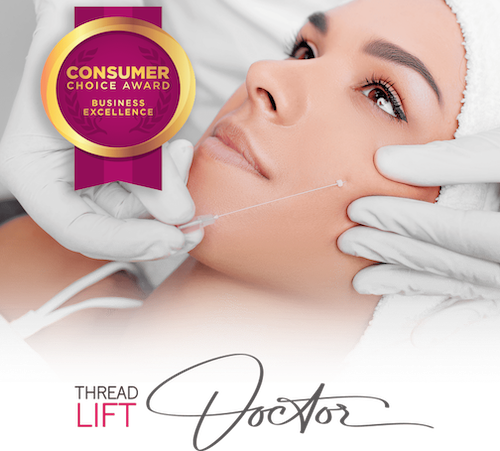
Thread Lift Questions and Answers: Information you need
to know before undergoing this face lift procedure
Hollywoods hottest procedure “Thread Lifts” is now Health Canada approved and here to waive your facial laxity and jowls goodbye.
Table of Contents
• Thread Lift Before and After Images
• What is a Thread Lift Procedure?
• What is the price of Threads Lift in Mississauga / Toronto / Oakville?
• How long is the recovery time for a Thread Lift?
• Thread Lift Procedure Breakdown – What to Expect
• Does Getting a Thread Lift hurt?
• How Long is a Thread Lift Procedure?
• How Many Threads will I need to see results?
• Am I a good candidate for Thread Lifts?
• How long will it take for me to see the full results from a Thread Lift procedure?
• Are Thread Lifts Safe? What are the Risks?
• What are the Different Types Thread Lifts?
• Not all “Thread Lifts” are the same. Learn to understand the Thread Lift Marketing Gimmicks
• Price and quality of PLLA Thread Lift
• Why you should choose the Thread Lift Doctor
• What to Expect During your Complimentary Thread Lift Consultation
• How to Prepare for your Thread Lift Procedure
• Can I get filler and other facial treatments after my Thread Lift?
• Why You should Choose Dr. Bector
• Thread Lift Glossary
• Book a FREE Thread Lift Consultation
THREAD LIFT BEFORE AND AFTER RESULTS / TORONTO / MISSISSAUGA / OAKVILLE
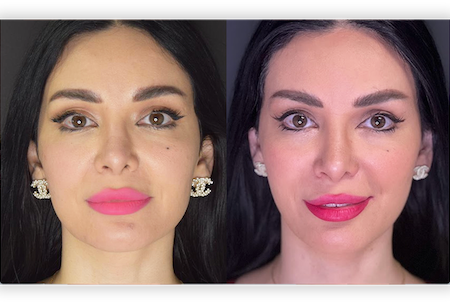

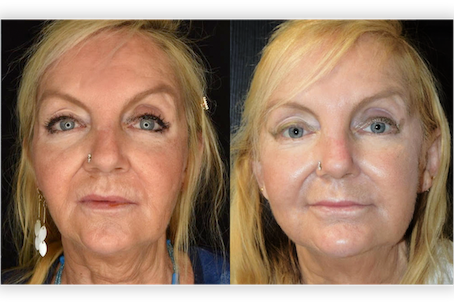
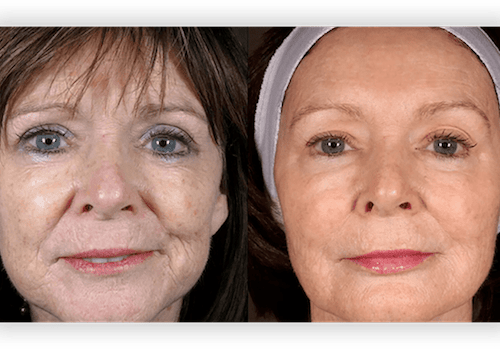


What is a Thread Lift Procedure?
A Thread Lift is a minimally invasive procedure perfected by Dr. Bector, Toronto’s Thread Lift Doctor. Dr. Bector places the threads under the skin of the facial area that needs restoring and lifting. After the Threads are carefully placed, he pulls them upward and locks them in place with the cone shaped beads on the thread. The effect is immediate and long lasting.
During a thread lift, the medical practitioner uses a high-grade surgical suture to improve the positioning of loose skin on the face or body. After a thread lift, your skin looks more youthful, lifted, and sculpted. Another benefit of thread lifts is that it enhances collagen production in the treated area. Collagen is an essential protein found in connective tissues, and by boosting its production, the thread lift helps stimulate the body's natural response.
In the last two decades, the innovations in this skin rejuvenating technique have become widely popular across the globe thanks to beautiful results without downtime.
Candidates for a thread lift most commonly fall between 30-50, but it can also benefit higher age groups. It is also ideal for those who don't want a surgical facelift and want to avoid unwanted wrinkles with age.
What is the price of Threads Lift in Mississauga / Toronto / Oakville?
The average cost of the Thread Lift procedure varies depending on the location and doctors' experience. The price ranges between $900 and $1500 per thread on average in Canada. To ensure a balanced procedure, clients often need to purchase at least two threads for every treatment. When repositioning and raising the skin around the cheekbones, for example, each thread must be mirrored on the opposite side of the face.
It is possible to get a thread lift on your forehead, midface and jowls, under-eye area, along the neck area, jawline and eyebrows.
How long is the recovery time for a Thread Lift?
After a thread lift, there is about two weeks of recovery. You may notice some swelling and bruising during the two weeks, but it is possible to return to work straight away. You may see the results right after the treatment, but it becomes more apparent after a few days and continues to improve for up to one year.
You can get back to your daily routine right after the Thread Lift treatment. Your cosmetic doctor may recommend no excess rubbing or sleeping on the stomach to make it more effective. Not using face moisture cream for a few days and avoiding high-intensity workouts are also good ideas. Most professionals recommend scheduling an appointment for Thread Lift when you have at least two days to spare.
Thread Lift Procedure Breakdown – What to Expect
Thread Lifts are a simple 4-step process requiring just an hour and a half of your time. You will be awake and even can talk to your cosmetic doctor during the process. Here is a simple breakdown of how it goes on Day-1:
• Local Anesthesia: The doctor will provide local anesthesia to make your skin comfortable and pain tolerant during the treatment.
• Insertion Points: The cosmetic doctor will make a tiny opening for the threads to enter. The opening is usually not visible after one day.
• Threads: Once your skin becomes numb after the anesthesia, the lines are passed beneath the skin. Most customers don't report any significant pain or discomfort in this process.
• Youthful Appearance: Swelling and bruising go away over time to show a smoother and better-defined jawline as well as a more youthful-looking face.
Week 1-2:
The doctor will provide a post-treatment sheet detailing things to do and avoid. It can include avoiding moisturizer and rubbing the treated areas, doing extensive workouts, or using heat-based treatments on the face for about two weeks.
Does Getting a Thread Lift hurt?
As Thread Life is a minimal invasive skin-lifting technique, most people don't feel much discomfort during the process. Also, cosmetic doctors can use local anesthesia to prevent any significant pain; you're unlikely to feel discomfort during the insertion of threads. The pain is comparable to the experience of having a Dermal Filler injection. But do remember that skin sensitivity is different for people. For example, women can have increased sensitivity during their menstrual cycle and feel discomfort even with minimal intervention.
How Long is a Thread Lift Procedure?
Depending on the treatment area and the number of thread implantations, the Thread Lift can take anywhere between 30-minutes to 2-hours. For example, it can take just half an hour to insert two threads on each cheek. However, when you increase the number of threads, the treatment time increases by 30-minutes for each thread pair.
How Many Threads will I need to see results?
Depending on your skin type, texture, and cosmetic goals, a thread lift technique can be tailored to your specific needs. This treatment may include two to eight strategically positioned threads. Lifting, skin tightening, and cellular rejuvenation can be achieved with a variety of different threads. These are the most common factors determining the number of threads you may need:
• Tolerance: Your doctor can determine the number of threads depending on your risk tolerance. More threads can mean more discomfort. During the consult you and the doctor will decide how many threads work best for you.
• Age: Older persons can require more threads for the treatment.
• Facial Features: Patients' face characteristics and needs vary greatly. Hence treatment approaches are not the same for all patients.
Generally, four to eight threads are recommended for a facelift and two to four for the neck.
Am I a good candidate for Thread Lifts?
Individuals in their 30s and older who have a little saggy, wrinkled, and creased skin on the forehead, face, and neck are often suitable candidates. Also, those in good health and who have subtle visible signs of ageing can find this treatment helpful.
The Thread Lift can also help those who want to avoid surgery and prevent the beginning of facial ageing by using a non-surgical method. This technique can be a good option for anyone who wants to improve the texture and tautness of any loose skin, particularly that around the neck and lower face.
You can choose a Thread Lift if you:
• Have visible signs of ageing around your face
• Avoid surgical facelift
• Have a clear set of expectations from this procedure
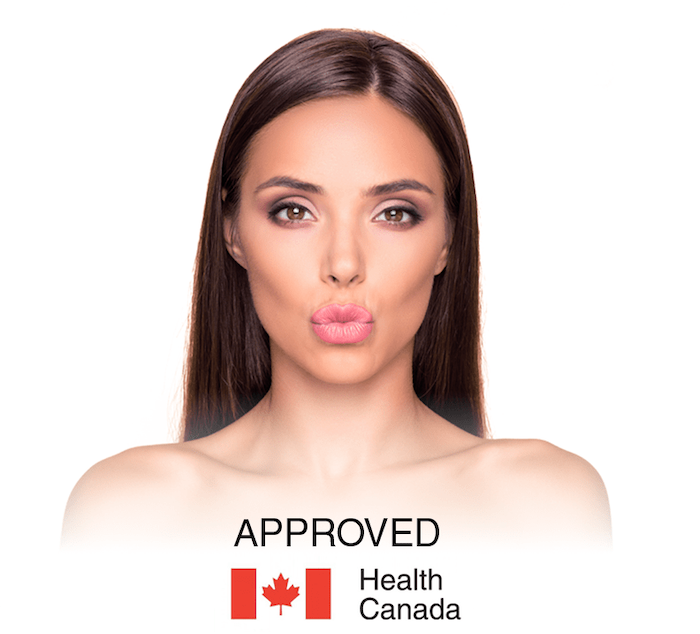
How long will it take for me to see the full results from a Thread Lift procedure?
Minor results can be seen immediately following a thread lift procedure. New collagen grows in the treated regions while the skin recovers, making the difference more noticeable. Benefits can be long-lasting, ranging from 2-4 years, depending on your age.
Short and long-term benefits include:
• Instant lift: The Thread Lift treatment naturally boosts collagen production improving the face lines. Although the significant results are slower, it is a great option considering the expensive of plastic surgery and the down time with surgery.
• Less time consuming: A single session consisting of one or two thread pairs take approximately one hour.
• No downtime: You can resume most activities of your everyday life in two or three days but must be cautious for about two to three weeks.
• Immediate improvements: According to a detailed study, a PLLA thread lift showed quick improvement in skin sagging immediately after the treatment.
• More Youthful appearance: Another study indicates that the improvements can last two to four years depending on age and other individual factors.
Are Thread Lifts Safe? What are the Risks?
Unlike facelift surgery, a thread lift has a very low risk of any significant complications. The best way to avoid any unwanted risk is to choose a competent practitioner like Thread Lift specialist Dr. Bector. He tailors the procedure based on your requirements and helps you make a better decision without feeling pressured or rushed.
Minor complications may occur but are usually easily corrected. Most common experiences include: bruising, swelling, bleeding, slight pain during the treatment. Notifying your cosmetic doctor about any health conditions and medications you are taking is a good idea.
Infection from a thread lift is extremely rare. However, contact your doctor immediately if you see symptoms like redness for more than 48 hours or fever.
What are the Different Types Thread Lifts?
In the last two decades, there have been significant improvements in thread materials. Although all Thread Lift techniques have one common goal, improving collagen production, the thread materials can vary. The most common thread-type includes:
• PLLA Threads: Currently this is the only thread that is Health Canada approved for use in thread lifting procedures. These threads are made from Poly-L-Lactic Acid and have small cone shaped beads along the thread. The cones allow the thread to grip the skin to reposition and hold it in a lifted position. They do not require any incisions, and induce collagen production in the areas of insertion. These threads lift, tighten and improve skin quality.
• Mono Thread: Threads with no barbs are called mono threads. For skin tightening benefits, these threads are typically inserted into the face in a mesh-like pattern. Despite stimulating collagen production and synthesis, Mono threads are often only valid for skin tightening and not for lifting.
• Screw Thread: A single or double thread intertwined together around the inserting needle. It works well for lifting sagging skin. Screw threads are commonly used to lift skin in face.
• Cog Thread: These are like mono threads but with barbs. Because of its ability to hook under the skin, it provides support to the sagging tissues. Cog threads, in contrast to smooth mono threads, do not necessitate the use of anchoring points. Collagen is formed around the lines and barbs of cog threads, making them effective at elevating and slimming the jawline. The effect of Cog threads will typically last 4 to 8 months.
Not all “Thread Lifts” are the same. Learn to understand the Thread Lift Marketing Gimmicks?
Many individuals often confuse other facelift treatments with Thread Lift. For instance, HIFU™ (High-Intensity Focused Ultrasound) is another skin tightening treatment but has a different mechanism than Thread Lift. Threads are often the preferred choice for targeted lifting, tightening and provide long-term visible results.
Price and quality of PLLA Thread Lift
Health Canada has approved only a few thread variants that don't pose any significant risk for clients. That's why you should always book an appointment with a trusted cosmetic doctor with a history of using quality threads approved by Health Canada for the purpose of thread lifts.
Why you should choose the Thread Lift Doctor
If you're thinking of getting a thread lift, it's critical to find a certified trained practitioner. As most treatment providers use more or less the same materials, what differentiates the treatment results is the provider's skill set and experience placing the threads appropriately and handling different face features and skin textures.
What to Expect During your Complimentary Thread Lift Consultation
Your cosmetic doctor will begin with a thorough cleansing and disinfecting of the face area. Then a surgical marker is used to define the face line and targeted area. Later, local anesthetic is injected to numb the marked areas to avoid any pain and discomfort.
Threads will be inserted, positioned, and secured into place to elevate the sagging skin. In the end, the entire treatment area is again cleaned and sanitized before providing a post-treatment instruction sheet. The sheet details things to do and avoid after the treatment and the ideal time for the next appointment.
How to Prepare for your Thread Lift Procedure
There are certain things to consider before getting a Thread Lift procedure. Some of the best practices include:
• Avoid alcohol and smoking for a 2 to 3 days before the treatment.
• Avoid anti-inflammatory medications for 7 days before the treatment.
• Inform your doctor if you have any medical conditions or allergies
• Sleep well the night before to have a stress-free experience
• Avoid optional supplements and non-medical vitamins.
Can I get filler and other facial treatments after my Thread Lift?
Yes. If you are planning additional procedures like Dermal Filler in the same face area, we recommend you wait four to six weeks before doing so. Injecting Botox into the forehead following a cheek thread lift is entirely safe. Many other treatments can be combined with a thread lift, but talk to your cosmetic doctor before starting anything new.
Why You should Choose Dr. Bector
Dr. Bector is also known as The Thread Lift Doctor because he has an extensive track record of completing hundreds of thread lifts with beautiful results. He is a qualified and licensed medical doctor and one of the best in Canada. Dr. Bector has spent several decades perfecting his ability to bring cosmetic medicine together with natural and beautiful aesthetic results.
When clients have questions or concerns, Dr. Bector does not rush them. His ultimate goal is to make his clients look and feel their best!
Thread Lift Glossary
Local Anesthetic: A local anesthetic is a drug that reduces the experience of pain in the area where it is administered. On the other hand, a general anesthetic numbs the entire body, whereas a local anesthetic numbs a specific area of the body. Commonly used local anesthetics include Lidocaine, Mepivacaine, and Marcaine. Unlike those used in operation rooms, the patient does not lose consciousness and remains attentive, alert, and awake.
Threads: There are generally three types of thread used in Thread Lift procedures: 1. polydioxanone (PDO), 2. poly-L-lactic acid (PLLA), or 3. polycaprolactone (PCL).
A typical surgical suture thread, polydioxanone (PDO) threads have six- to 12-month effectiveness. After three to four months, the lines are completely dissolved and absorbed by the skin, helping collagen production for upto 12 months. Some studies have demonstrated that PDO is efficient at reducing the appearance of pores and fine wrinkles because of its ability to alter the dermis. In addition, it can enhance the thickness of the papillary dermis by promoting collagen production in the dermal matrix.
Another substance typically utilized for surgical sutures is the Poly-L-Lactic Acid (PLLA). Collagen formation can be more accurately simulated using PLLA than it can with PDO. Lactate, glucose, carbon dioxide, and water are some chemicals that PLLA breaks down into when dissolved in water. Currently the Silhouette Instalift PLLA threads are the only threads that are approved by Health Canada for use in the thread lift procedure.
Aseptic Environment: When it comes to keeping patients safe, the aseptic technique is a collection of medical practices and procedures. The aseptic approach can prevent vital equipment from becoming contaminated by bacteria, viruses, and other microbes. So an aseptic environment is an environment free from germs and bacteria and minimizes the risk of infection post treatment.
Collagen: Collagen is a protein found in human skin, blood, muscles, and bones. This protein is also responsible for healthy joints, flexibility, and smooth skin. Unfortunately, the production of collagen decreases with age. That's why wrinkles are more visible in older people. However, Thread Lifting techniques can help boost natural collagen production and thus tightening of the skin.
Treatment Plan: Patients who want to achieve specific outcomes should have a well-thought-out treatment plan in place. To get the best results from a cosmetics doctor, you need to know exactly what you want to accomplish. Choose a plan that consists of the following items:
• Duration and effectiveness of the treatment
• Things to do and avoid before and after the treatment
• Available options for your concerned area
• Required number of consultations
• Includes appropriate treatments to reach desired results
• What to expect post-treatment?